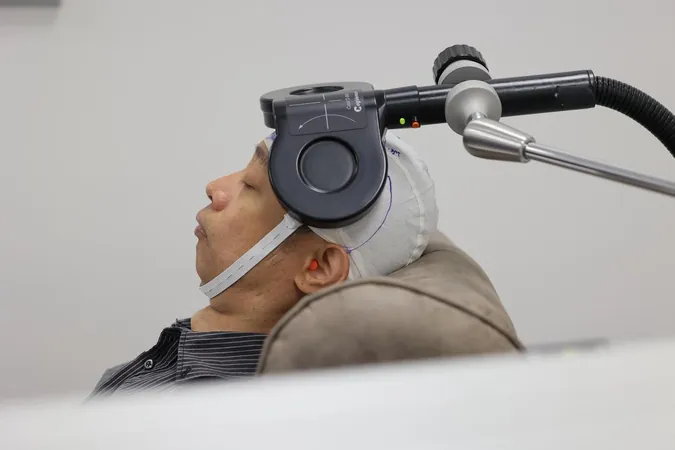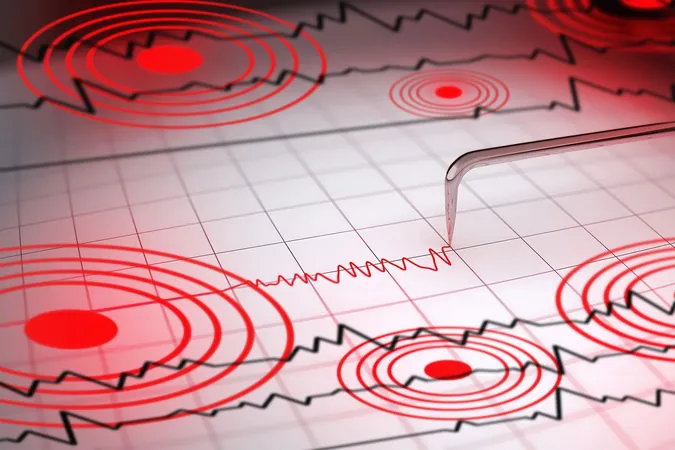
How TMS Helped an Engineer Triumph Over 25 Years of Depression
2025-08-08
Author: Jia
From Darkness to Light: Mr. Ng's Journey
For over 25 years, Mr. Ng Chee Hiong battled crippling depression and anxiety, often isolating himself for weeks on end. This 52-year-old engineer found solace only within the confines of his home, emerging rarely—and mostly when food ran out.
In a society bustling with life, Mr. Ng walked with his head bowed, a hat pulled low, avoiding every eye. His struggles traced back to a troubled childhood, exacerbated by the pressures of academic life. The breaking point came in 1998 while he was at university, leading to his first psychiatric appointment.
The Fight Against Treatment-Resistant Depression
Despite numerous antidepressants and therapy sessions over the years, Mr. Ng’s condition worsened, resulting in two significant work absences. A severe relapse in 2017 forced him to step away from his engineering career altogether.
However, hope unfurled when he discovered transcranial magnetic stimulation (TMS)—a groundbreaking non-invasive treatment that has begun to change lives in Singapore.
A Game Changer: The Power of TMS
In June, after years of setbacks, Mr. Ng secured a part-time job at a nursing home—his first job in over eight years. TMS, which employs magnetic pulses to stimulate underactive brain cells, played a crucial role in this incredible turnaround.
"Right now, I'm taking one step at a time," he declared, filled with newfound optimism.
Growing Accessibility of TMS in Singapore
On the treatment landscape, TMS is gaining traction. Soon, Singaporeans can expect access to this therapy through MediShield Life, which aims to cover TMS costs starting late 2024.
During his initial TMS sessions, Mr. Ng felt immediate relief from his relentless negative thoughts—a clear sign that the treatment was effective.
Clinical Insights and Promising Outcomes
Dr. Tay Yi Hang, the psychiatrist leading the TMS service at Khoo Teck Puat Hospital (KTPH), noted that nearly 60% of patients experience significant improvements, with many becoming nearly symptom-free. TMS not only tackles treatment-resistant major depressive disorder (MDD) but also shows efficacy in obsessive-compulsive disorder (OCD).
Each TMS session, lasting between three and 18.5 minutes, is painless, though the financial commitments—typically around $125 per session—can be a hurdle for many.
The Road to Recovery: Mr. Ng's Continued Journey
Mr. Ng completed 30 sessions of TMS in mid-2022 and with the encouragement of his treatment team, he has embraced both psychotherapy and medication as part of his recovery.
Though he faced a recurrence of symptoms nine months later, Mr. Ng has responded positively to a second course of TMS and is committed to monthly maintenance sessions—though these remain an out-of-pocket expense.
Brighter Futures Ahead
Since its introduction in Singapore in 2015, TMS has been a beacon of hope for those suffering from depression. With ongoing clinical trials exploring personalized TMS tailored to individual brain patterns, the future looks promising for patients like Mr. Ng.
Sharing his story, Mr. Ng aims to inspire others experiencing similar challenges, proving that recovery is within reach, one magnetic pulse at a time.



 Brasil (PT)
Brasil (PT)
 Canada (EN)
Canada (EN)
 Chile (ES)
Chile (ES)
 Česko (CS)
Česko (CS)
 대한민국 (KO)
대한민국 (KO)
 España (ES)
España (ES)
 France (FR)
France (FR)
 Hong Kong (EN)
Hong Kong (EN)
 Italia (IT)
Italia (IT)
 日本 (JA)
日本 (JA)
 Magyarország (HU)
Magyarország (HU)
 Norge (NO)
Norge (NO)
 Polska (PL)
Polska (PL)
 Schweiz (DE)
Schweiz (DE)
 Singapore (EN)
Singapore (EN)
 Sverige (SV)
Sverige (SV)
 Suomi (FI)
Suomi (FI)
 Türkiye (TR)
Türkiye (TR)
 الإمارات العربية المتحدة (AR)
الإمارات العربية المتحدة (AR)